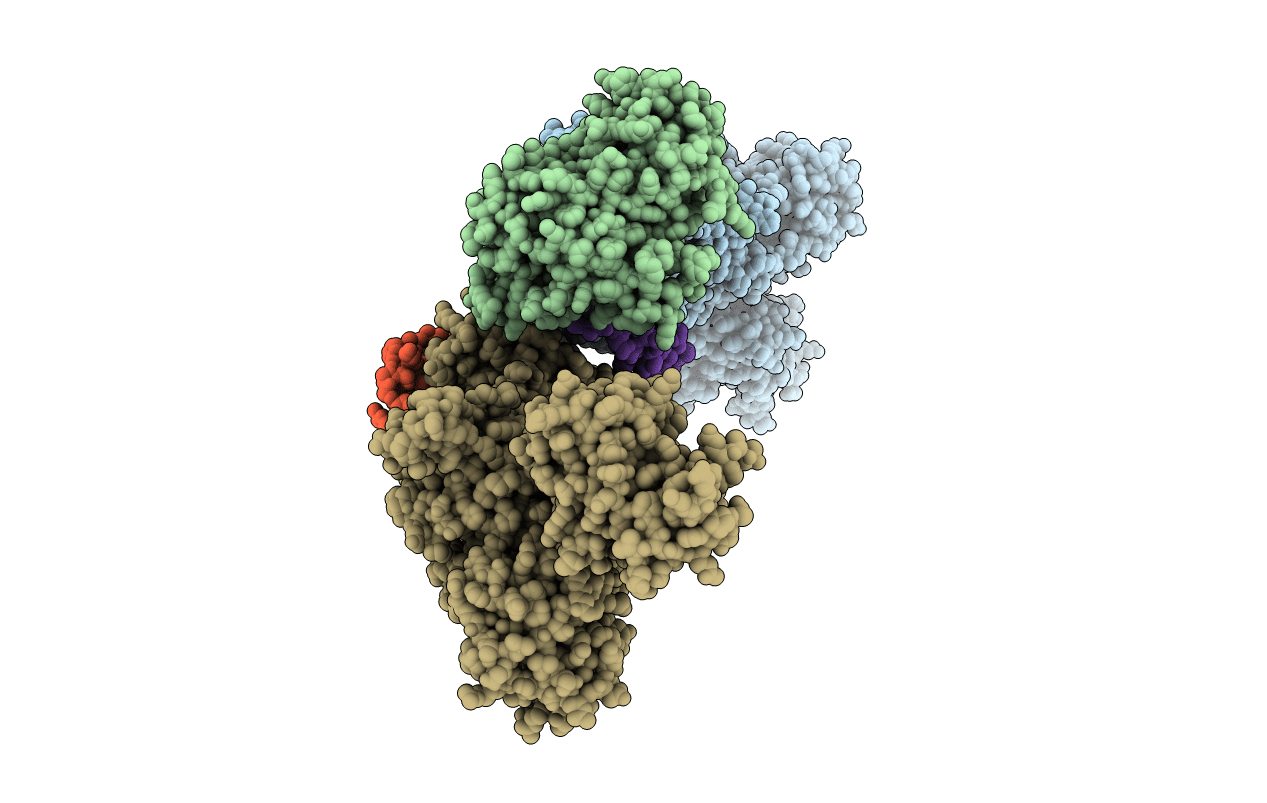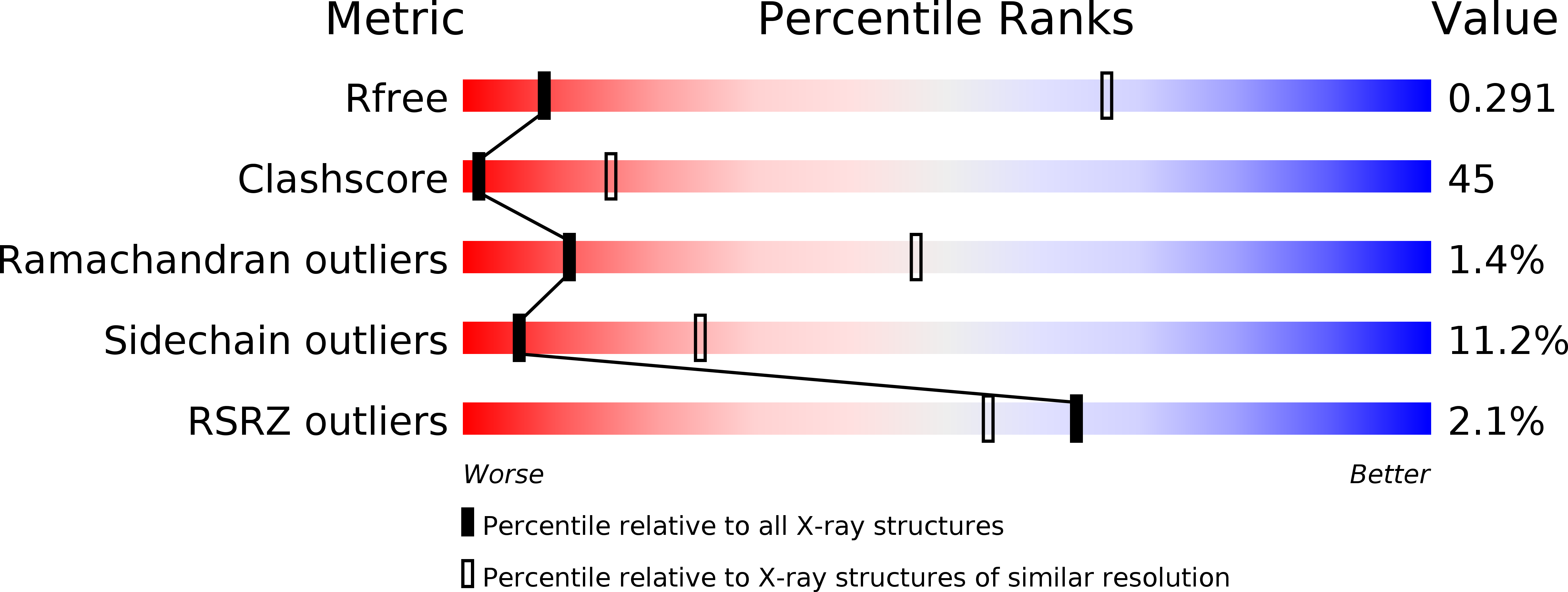
Deposition Date
2010-05-17
Release Date
2011-01-19
Last Version Date
2025-03-26
Entry Detail
PDB ID:
3N23
Keywords:
Title:
Crystal structure of the high affinity complex between ouabain and the E2P form of the sodium-potassium pump
Biological Source:
Source Organism:
Sus scrofa (Taxon ID: 9823)
Method Details:
Experimental Method:
Resolution:
4.60 Å
R-Value Free:
0.30
R-Value Work:
0.27
R-Value Observed:
0.27
Space Group:
P 21 21 21


